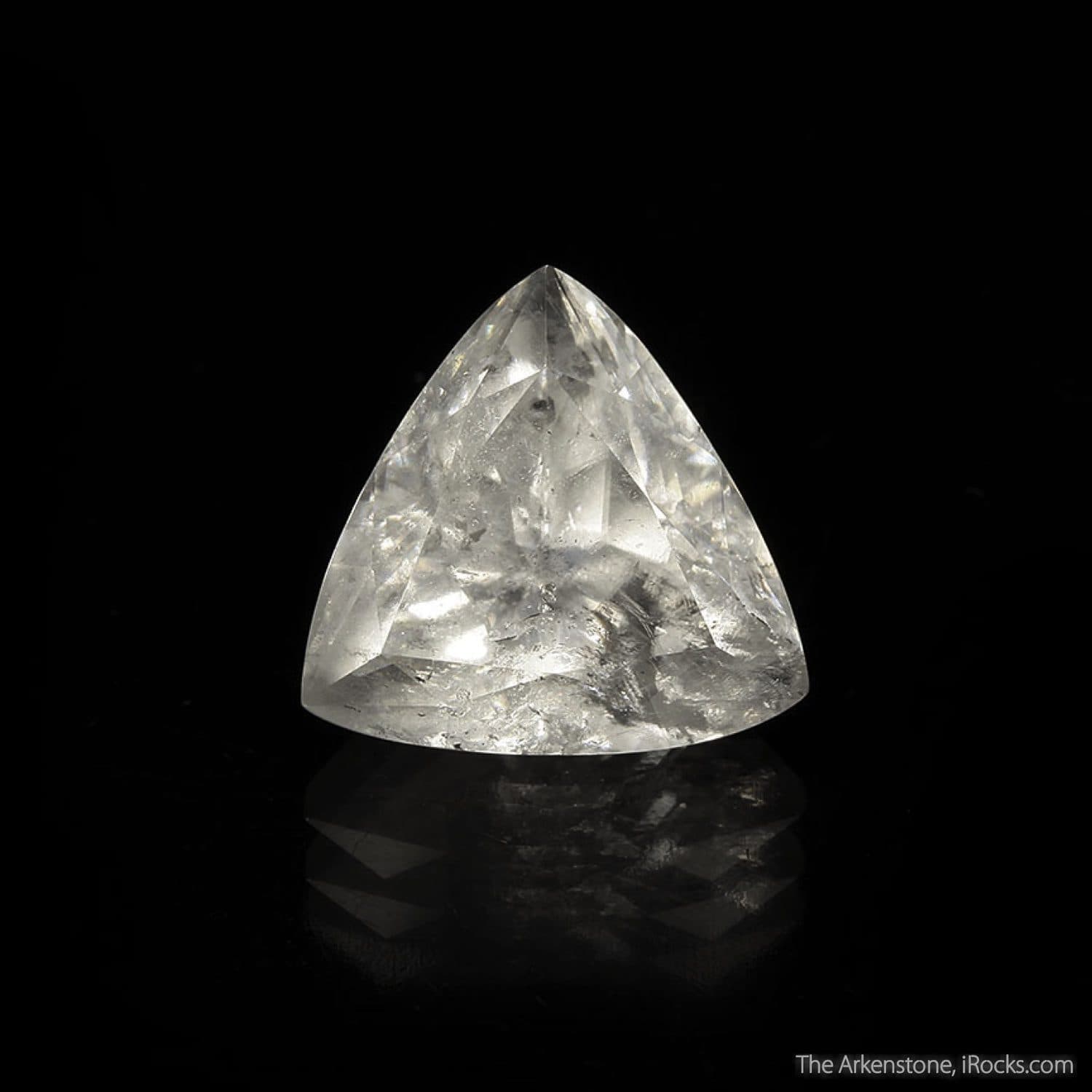
Dolomite Value, Price, and Jewelry Information
Although transparent dolomite crystals are fairly abundant and popular collector’s items, faceted gems are soft, fragile, and rarely seen in jewelry. However, massive material can be carved into decorative pieces.
4 Minute Read
What is Dolomite?
A carbonate mineral, dolomite forms a series with both the very rare ankerite, in which iron (Fe) exceeds magnesium (Mg), and the manganese (Mn)-dominant kutnohorite. Dolomites that contain Fe (but not in excess of Mg) are known as ferroan dolomites. Manganoan dolomites contain Mn, of course, which gives these stones a pink color.
Does Dolomite Make a Good Jewelry Stone?
Transparent dolomite crystals are difficult for faceters to cut. Dolomites have a low and variable hardness of 3.5 to 4, which varies along its four crystal axes, as well as perfect cleavage. These factors also make it a fragile stone for jewelry use. They are more liable to scratch and break than most jewelry stones.
Any dolomite ring stones should have protective settings. Earrings, pendants, and brooches would make more practical options for these gems. However, you're more likely to find dolomites in mineral collections than jewelry collections. Faceted dolomites would appeal most to collectors of unusual gems or aficionados of the art of gem cutting.
What is Dolostone?
Dolostones are rocks made from a mix of minerals, though their main carbonate is dolomite or ankerite. You may find some of these rocks referred to as dolomites. However, gemologists should distinguish between dolostones and dolomites.
Objects made from dolostone lapidary material have much greater wearability than dolomites. Artists have carved large sculptures as well as small decorative objects from dolostones.
Caymanite
A variety of dolostone, caymanite was first discovered in the Cayman Islands. This material can contain color bands of red, orange, white, black, and brown. With a hardness of 6 to 7 on the Mohs scale, this polycrystalline dolostone has greater toughness than crystalline dolomite. Caymanite has become a popular lapidary stone.
Kona Dolomite
This dolostone from the Kona Hills in Michigan contains stromatolites, fossilized algae. This lapidary material can show mottling, markings, or bands of multiple colors, such as black, brown, cream, gray, orange, pink, red, or yellow.
How Can You Identify Dolomite?
Optical Properties
As carbonates, dolomites have distinctive birefringence. Faceted pieces may show doubling of facet images.
As Fe substitution increases, the refractive indices of series minerals also increase from the dolomite values.
Although dolomites have a uniaxial optic character, anomalously biaxial specimens may occur.
Luminescence
Manganoan varieties may fluoresce pale pink through intense red, but weaker in longwave ultraviolet light.
Dolomites may display triboluminescence, which means it luminesces when held or rubbed.
Physical Properties
Unlike other carbonates, like calcites, dolomites may not effervesce when exposed to weak, room temperature hydrochloric acid (for example, during acid testing). However, the mineral may effervesce if powdered or composed of fine-grained crystals. (Please note, acid testing is a destructive test. Conduct this test only as a last resort on an inconspicuous spot and never on a finished gem).
Misidentifications
Calcite and magnesite gems may resemble dolomites. They may show similar colors, transparency, and birefringent doubling effects. Calcites have a lower hardness, but dolomites and magnesites fall within the same hardness range. (Scratch testing is another destructive test of last resort). Magnesite has a higher specific gravity (SG) than dolomite.
Are There Synthetic Dolomites?
Dolomite has many industrial applications, including agricultural, manufacturing, medical, and petrological. This mineral even has properties useful for studying particle physics. Not surprisingly, scientists have synthesized dolomites, including crystals, for many research projects. However, there is no known use of this lab-created material for jewelry purposes. With the natural material so abundant and not well-suited for jewelry, this would be most unlikely.
Sintered dolomite (powdered, then heated and compressed to a solid) has been used as bead material for South Sea pearl cultivation.
Dolomite Enhancements
Dyed dolomites have surfaced as imitations of more well-known and expensive gem materials, such as lapis lazuli and turquoise. Dyed dolomites may also resemble howlites. In one unusual case, SG and optical tests exposed beads sold as dyed howlite lapis lazuli simulants as, in fact, dyed dolomites.
Where are Dolomites Found?
Dolomites occur in abundance in many locales across the globe. However, the most well-known source of gem-quality material, Eugua, Navarra, Spain, produces magnificent, often large, perfectly formed and transparent crystals and clusters.
The famous Muzo emerald mine in Colombia has yielded very rare light blue dolomites. Most likely, natural radiation caused this unusual coloration.
Sources of pink cobaltoan dolomites include the Democratic Republic of Congo, the Czech Republic, and Morocco.
Notable gem-quality sources in the United States include the following:
- Missouri, Oklahoma, Kansas (the so-called Tri-State Mineral Region).
- Keokuk, Iowa (in geodes).
- New Mexico (transparent material, cuttable).
Other notable gem-quality dolomite sources include the following:
- Austria; Brazil; Quebec, Canada; China; Germany; Mexico; Namibia (cobaltoan and cuprian dolomites); Switzerland.
The Czech Republic, Hungary, Slovakia, and South Africa produce kutnohorite.
The Cayman Islands and Hungary produce caymanite.
Stone Sizes
Gem cutters often carve and stain massive material. Sometimes, natural color banding occurs.
Faceted dolomites from New Mexico can reach about 5 carats in size. The Spanish material can provide stones over 100 carats.
- Private Collection: 18.38 (Spain).
How to Care for Dolomites
Store dolomites and any jewelry made with them in a cloth bag or box, away from other harder gems. This will prevent contact scratches. Clean dolomites only with a soft brush, mild detergent, and warm water. See our gemstone jewelry cleaning guide for more recommendations.
Related Articles
Black Diamond Value, Price, and Jewelry Information
Chameleon Diamond Value, Price, and Jewelry Information
Gray Diamond Value, Price, and Jewelry Information
Green Diamond Value, Price, and Jewelry Information
Latest Articles
800 Years of Mogok: A Celebration in Tenuous Times
What is the Average Gemstone Faceting Yield?
Pyroxmangite Value, Price, and Jewelry Information
How to Identify Emerald Simulants and Synthetics
Never Stop Learning
When you join the IGS community, you get trusted diamond & gemstone information when you need it.
